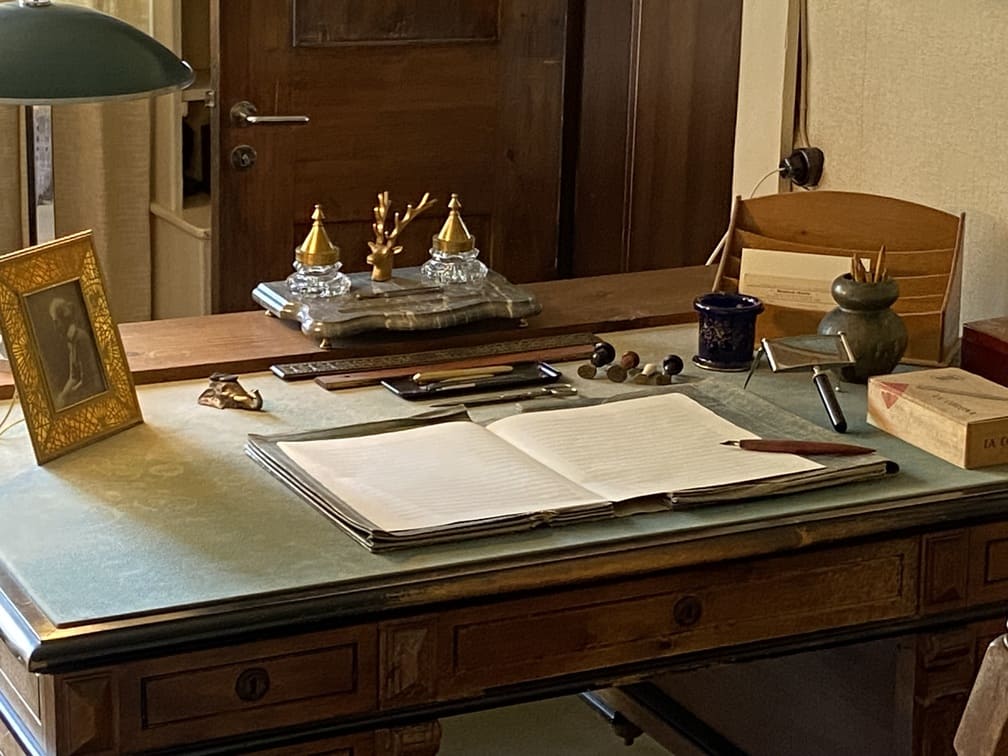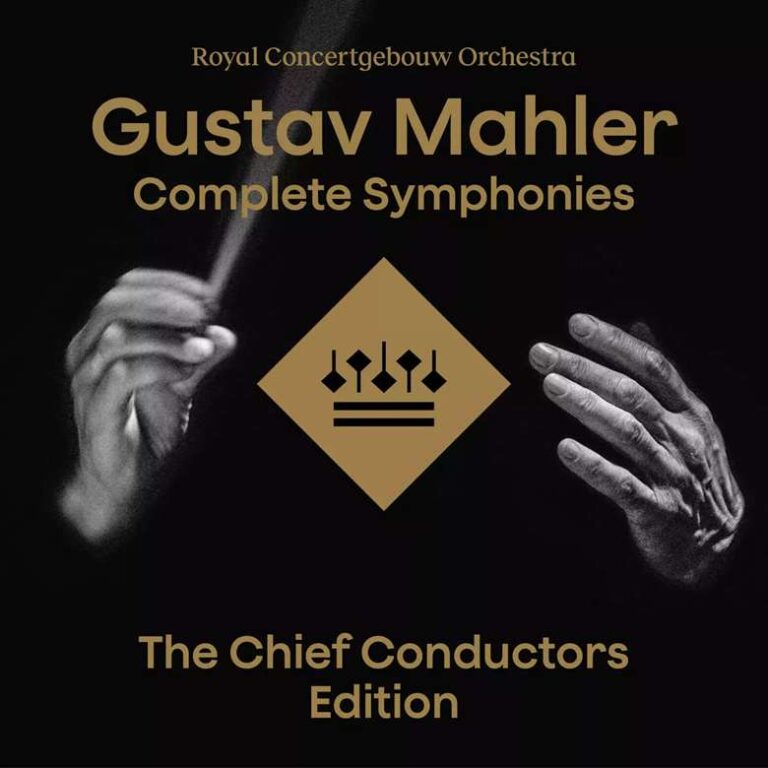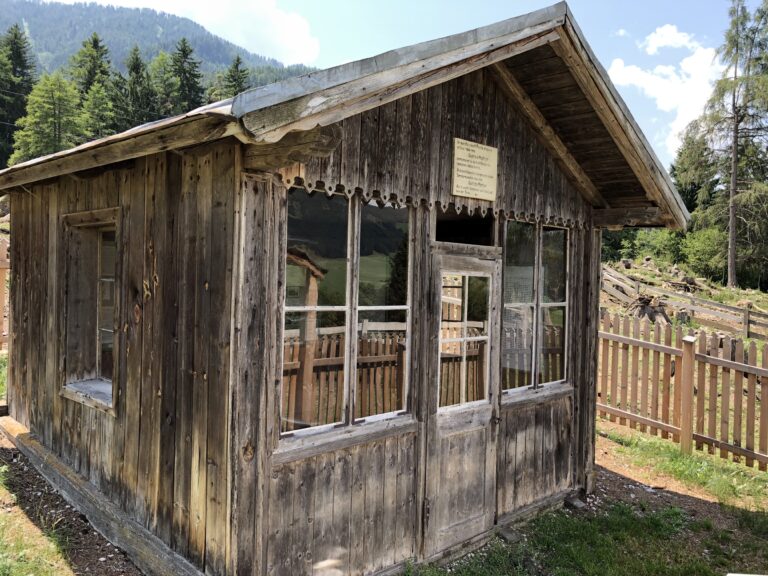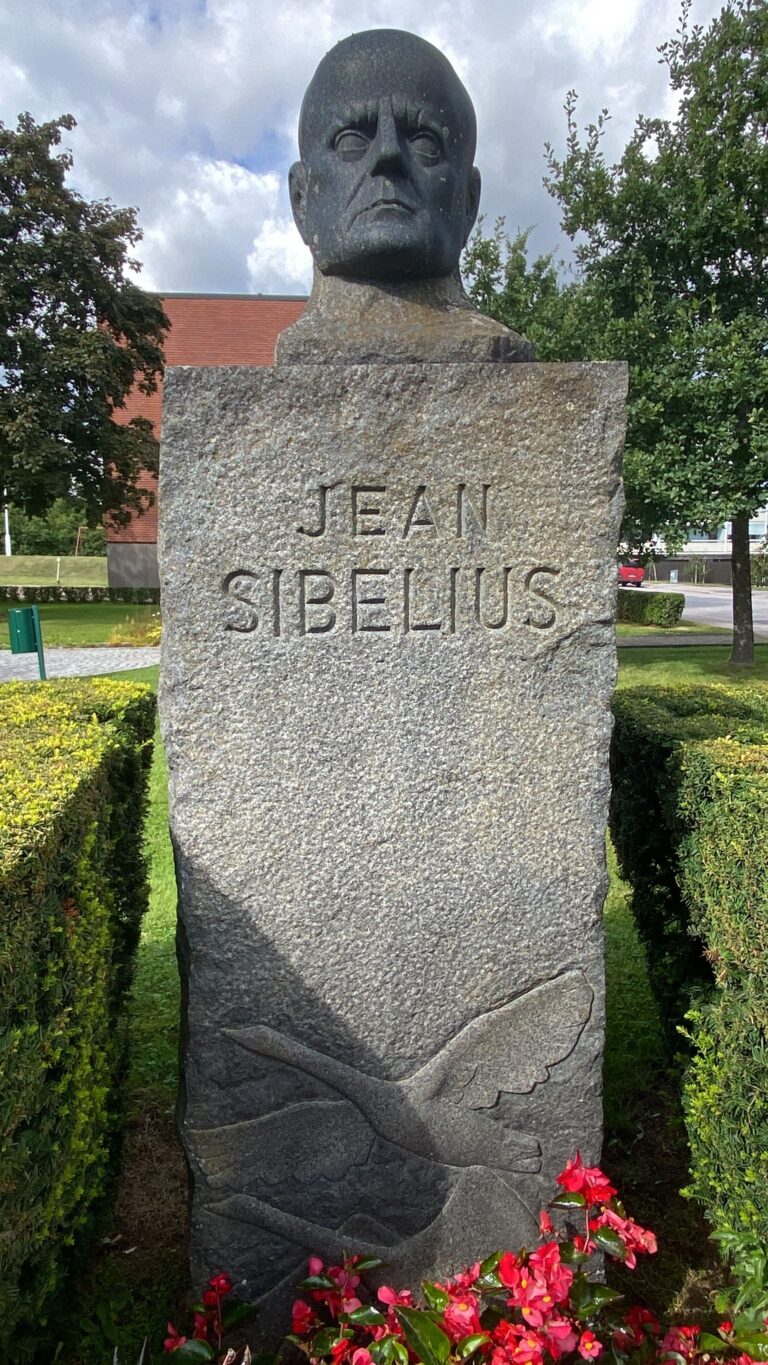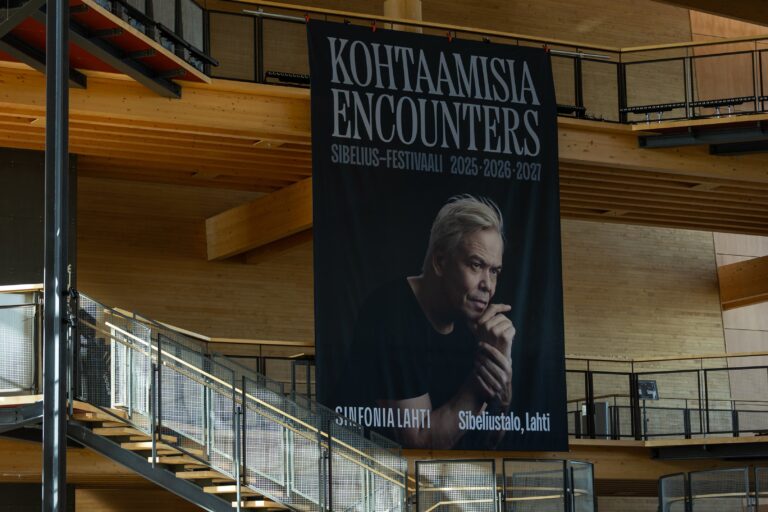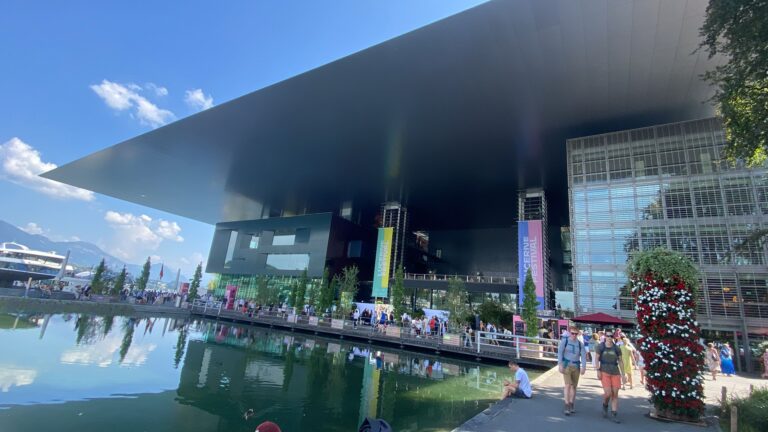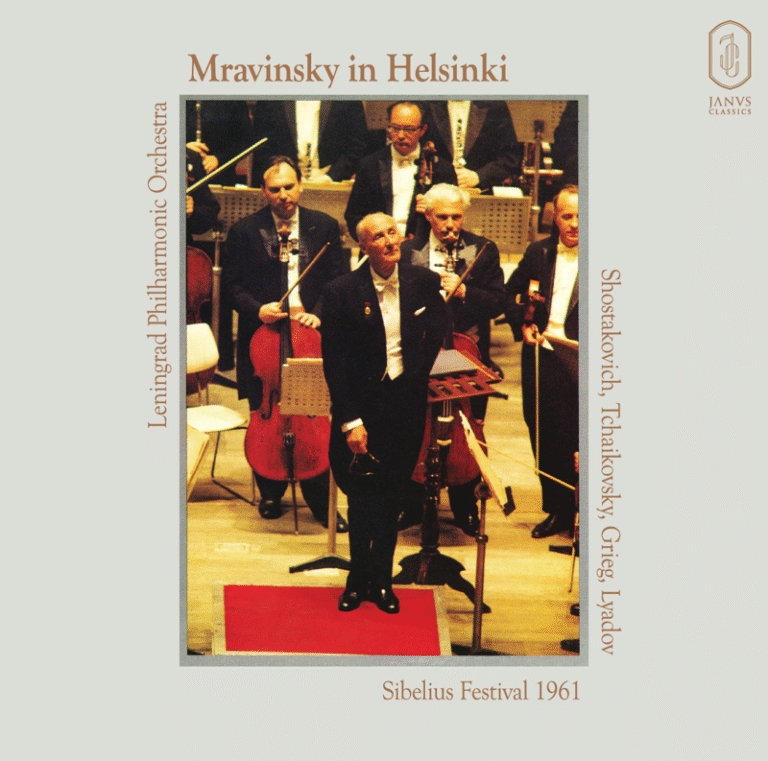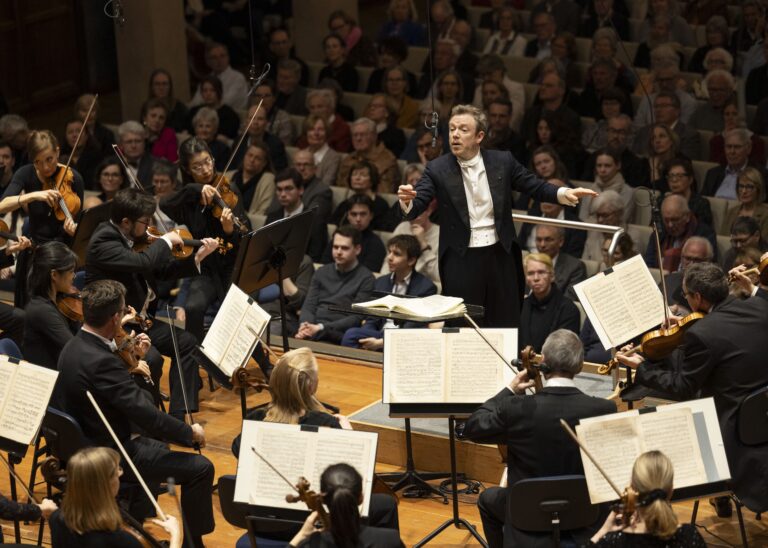Date and Venue: August, 31st, Sibelius Hall, Lahti (Finland)
Conductor: Dalia STASEVSKA
Orchestra: The Lahti Symphony Orchestra (Sinfonia Lahti)
Program:
Jean SIBELIUS (1865-1957)
1. Symphony No. 4 in A minor, Op. 63
2. Symphony No. 6 in D minor, Op. 104
3. Symphony No. 7 in C major, Op. 105
“Sibelius’s music continues to resonate with a power that confirms its place as one of the most contemporary of the 20th century.”
— Osmo Vänskä, conductor, 1998
As the final concert of the festival begins, a deep sense of nostalgia envelops the audience—especially those who have attended the Sibelius Festival for years and know exactly what I mean. There is a unique, timeless atmosphere here, a feeling of belonging and familiarity cultivated over time. This familial impression is further enhanced by the serene beauty of Lake Vesijärvi, which cradles the town of Lahti, creating an idyllic backdrop for this extraordinary musical journey. When Dalia Stasevska takes the stage to introduce the three symphonies of the evening, this shared sentiment becomes even more profound. She acknowledges the emotional depth of the Fourth, Sixth, and Seventh symphonies, marking the end of a cycle that resonates deeply with all present. This moment is not just another concert; it is the closing chapter of a musical odyssey.
Sibelius’s Fourth Symphony: An Enigma in Sound
Sibelius’s Fourth Symphony remains one of the most enigmatic works in the symphonic repertoire. Composed during a time of intense personal and artistic crisis, this symphony continues to intrigue and challenge listeners more than a century after its premiere. It stands as possibly the most abstract and modern piece in Sibelius’s oeuvre, marked by a stark departure from the Romanticism of his earlier works. Written after a near-fatal battle with throat cancer, the Fourth Symphony has often been seen as a personal reflection on mortality and inner turmoil.
Eschewing lush orchestration and folk-inspired melodies, the Fourth Symphony instead delves into dissonance, sparse textures, and unconventional forms, creating a soundscape that is as unsettling as it is mesmerizing. The symphony avoids a traditional triumphant finale, leaving the listener in unresolved tension. This deviation from the expected has led many to consider it Sibelius’s most forward-looking composition, foreshadowing the developments of 20th-century music.
Dalia Stasevska views this symphony as a kind of intimate journal, offering a glimpse into Sibelius’s soul during a challenging time in his life. She emphasizes that this work transcends mere music, becoming a profound psychological exploration, revealing the raw essence of the composer’s struggle.
From the opening bars, the audience is drawn into a world of desolation and solitude. The music’s texture immediately evokes the atmospheric and dissonant textures characteristic of Ligeti’s micropolyphony, with Ilkka Pälli, the solo cellist, delivering a haunting performance that paints a soundscape of desolation tinged with unsettling undertones. Under his bow, the cello becomes an instrument of dark introspection, perfectly aligning with the enigmatic and contemporary essence of this unique work.
The sound is atmospheric, essential, and at times, grating, conjuring a barren, desolate landscape where solitary asteroids drift through the void. The swelling strings suggest an underlying menace, hinting at unseen dangers in this icy expanse.
This glacial soundscape, reminiscent of Mahler’s Ninth Symphony in its exploration of existential despair and the eerie, suspenseful atmosphere akin to Kubrick’s 2001, creates a manifestation of miasmas, of malignant cells traversing a landscape of loneliness and despair. It’s a hauntingly beautiful performance that leaves a deep, indelible impression.
As the music transitions into more joyful passages, these are still tinged with melancholy. Under Stasevska’s incisive direction, even moments of light carry an underlying tension. Her conducting is incisive, ensuring the music remains taut and purposeful, never allowing the music to linger. The fleeting waltz-like reminiscences and brisk flutes prevent any sense of relaxation, driving the music forward with relentless energy.
As the symphony progresses, a foreboding chant rises from the clarinet and flute, signaling the approach of something darker. This is Sibelius at his most tragic, and Stasevska expresses this deeply unsettling atmosphere with precision. The third movement, with its long, unsettling silences, paints a stark, abstract landscape—one where the trombones evoke an image of emptiness and desolation.
Even the final movement, which initially seems more joyful, maintains an underlying darkness. There’s no trace of the kaleidoscopic colors of the Kalevala, no folk-inspired themes to lighten the mood. Instead, Stasevska sustains a somber, almost fatalistic energy, leading the symphony to a conclusion that defies resolution. The final bars unfurl a tense interaction between flutes, violins, and muted horns, creating a vision of existence that is deeply disenchanted. The symphony closes with an ending that is stark and austere, provoking a profound reflection on its deeper meaning.
Stasevska’s interpretation emphasizes the underlying tragedy in every phrase, and the orchestra conveys this narrative with remarkable precision. The final notes leave the audience questioning the very essence of the symphony itself, echoing the old adage “all’s well that ends well,” yet here we are left with the unsettling realization that “all is ill that ends ill.”
Sibelius’s Sixth Symphony: A Symphony of First Snow and Silent Epiphanies
Jean Sibelius once likened his Sixth Symphony to “the scent of the first snow,” a metaphor that perfectly describes the ethereal and almost magical quality of this work. Composed in 1923, this symphony is often considered one of Sibelius’s more enigmatic compositions—delicate yet profound, weaving a soundscape that contrasts sharply with the austere severity of his earlier Fourth Symphony. Unlike its predecessor, the Sixth Symphony is imbued with a clarity and romanticism that is almost pastoral, drawing comparisons to Ralph Vaughan Williams. From the outset, we are greeted by a crystalline purity, a musical landscape that is both tender and evocative.
The first movement opens with a striking transparency, where Sibelius’s romanticism shines through. Dalia Stasevska brings out this romantic essence with genuine warmth, allowing the harp’s gentle interjections to resonate like delicate snowflakes falling silently to the ground. There are moments of epic grandeur, yet Stasevska maintains a focus on the underlying intimacy of the piece, offering a performance that feels both expansive and deeply personal. This movement stands in stark contrast to the preceding Fourth Symphony, embodying a spirit that is more hopeful, as if the music itself is breathing a sigh of relief after the previous work’s weighty introspection.
The second movement reinforces this impression with its concentrated writing, firmly rooted in the Dorian mode. Sibelius’s craftsmanship shines, with the music taking on a formality reminiscent of Bach, with rigorously structured passages and moments of polyphonic brilliance. The violins create a swirling motion that occasionally harks back to the mythic realms of the Kalevala, reminding us of Sibelius’s deep connection to Finnish folklore. Stasevska interprets these complexities with a deft touch, ensuring that the music’s intricate layers are brought to the fore without losing the overall sense of cohesion and flow.
In the third movement, a fluid, dance-like quality emerges, propelling the music forward with graceful energy. There’s a noticeable kinship with Vaughan Williams, particularly recalling the rhythmic vitality of his Second Symphony. The music could depict the image of a solitary figure walking through the snow-covered streets of Helsinki, the fresh snow crunching underfoot as the city quietly hums in the background. Stasevska conveys this sense of movement with effortless lightness, allowing the music to breathe and flow naturally, as if tracing the pathways of a quiet winter’s walk.
The fourth movement introduces a richer palette of colors, almost oriental in its vibrancy, revealing a symphony that is far more complex and nuanced than it might initially appear. There is an underlying rhythmic tension here, with syncopations and sudden shifts suggesting a theme and variations structure, each iteration becoming more rapid and intricate. The music is interspersed with ancient airs, evoking the Renaissance period, which adds a timeless quality to the work. As the symphony draws to its conclusion, we are left with a serene and almost imperceptible quietness, where the music fades into the very edges of audibility. Stasevska’s mastery of silence and pianissimo is remarkable, allowing the symphony to close with a sense of peaceful resolution, leaving the listener in a state of reflective contemplation.
In this performance, Dalia Stasevska once again demonstrates her deep understanding of Sibelius’s unique voice, delivering a rendition that is both technically assured and emotionally resonant. The Lahti Symphony Orchestra, under her direction, excels in bringing out the nuanced textures and colors of this elusive symphony, making it a fitting continuation of the festival’s exploration of Sibelius’s symphonic world.
The Seventh Symphony: A Fusion of Fire and Ether
As we delve into Sibelius’s Seventh Symphony, we encounter a fusion of the final two elements left to be fully expressed: fire and ether. This symphony is vast in scope and undeniably complex, requiring a deep and thoughtful engagement to fully grasp its nuances. Among the three symphonies performed this evening, the Seventh stands out as one of Sibelius’s most enigmatic and least accessible creations, leaving the listener pondering its singularity and depth long after the final notes have faded.
Dalia Stasevska’s conducting is particularly expressive throughout the performance. Her interpretation evokes imagery that is both profound and elemental—perhaps here we find the flight of swans, an allusion to a moment of sublime beauty. The waves and undulations bring to mind Tapiola, with its winds rustling through the branches, the whispering leaves of birch trees. This symphony is one of contrasts, composed of winds and the tumbling of massive granite formations, of softness and sudden upheaval. A critic once referred to this Seventh Symphony as the “Finnish Parsifal,” an apt description for a work that blends mystical and epic qualities.
The symphony reaches its zenith at a moment that could be described as magical, a climactic point in the score that might be seen as the appearance of the Grail. However, this peak is better understood as the manifestation of the Sampo, this mythical figure representing a source of boundless wealth and prosperity. In this symphony, Sibelius seems to have discovered his own Sampo, a culmination of his symphonic output that is as intense and radiant as the strings stretched to their limits, and brass that deliver a soothing yet powerful release.
The Seventh Symphony achieves a perfection that seems impossible to surpass, embodying the very essence of his mature style. The music rises to a point of almost unbearable tension before finally resolving in a moment of tranquility that feels both inevitable and deeply satisfying.
However, one might argue that tonight’s performance, while superb, lacks a certain sense of mystery that this symphony demands. For that, perhaps we must look to other interpretations, such as those by Leif Segerstam, Paavo Berglund or Osmo Vänskä which might better reflect the enigmatic and elusive qualities that make the Seventh Symphony such a unique and profound work. Nonetheless, Stasevska’s interpretation offers much to admire and leaves us with a great deal to contemplate.
The evening does not end with the Seventh Symphony alone. As the final notes of Sibelius’s symphonic journey fade, the audience is treated to a joyful and long-acclaimed musical firework encore: Finlandia. This piece, though familiar to many, carries extraordinary weight tonight. As members of the audience wave Finnish and Ukrainian flags, the emotional resonance of the performance is deeply amplified, highlighting the significance of the moment.
Dalia Stasevska approaches Finlandia with fervor and conviction, bringing fresh energy to this well-known piece. Her interpretation is notably brisk—I have never heard it performed at such a rapid pace—yet she skillfully balances this with moments of grand lyricism and breath, creating an interpretation that feels both urgent and deeply reflective. Far from being a mere encore or a convenient crowd-pleaser, Stasevska’s Finlandia is a deeply considered performance, one that naturally leads to a standing ovation and a palpable sense of emotion that fills the hall.
Thus, the Sibelius Festival reaches its conclusion with Dalia Stasevska’s complete cycle of Sibelius’s symphonies leaving a lasting impression. The journey, while varied in its execution, is a powerful testament to Stasevska’s deep understanding of Sibelius’s work. The integration of two different orchestras throughout the festival brings a certain diversity of interpretation, highlighting the multifaceted nature of Sibelius’s music.
Stasevska’s dedication to clarity of expression and her deep knowledge of the composer’s oeuvre are evident throughout, as is her passion, which infuses every performance with urgency and importance. The youthful energy and excellence of the Lahti Symphony Orchestra also shine through, promising a bright future in their continued advocacy for Sibelius’s music.
Sibelius’s music continues to resonate as one of the most contemporary of the 20th century. This Festival in Lahti demonstrates that there is still much to discover in these enigmatic scores—pieces that form a rugged, mysterious massif, a true musical monolith that remains as fascinating and unique as ever.

